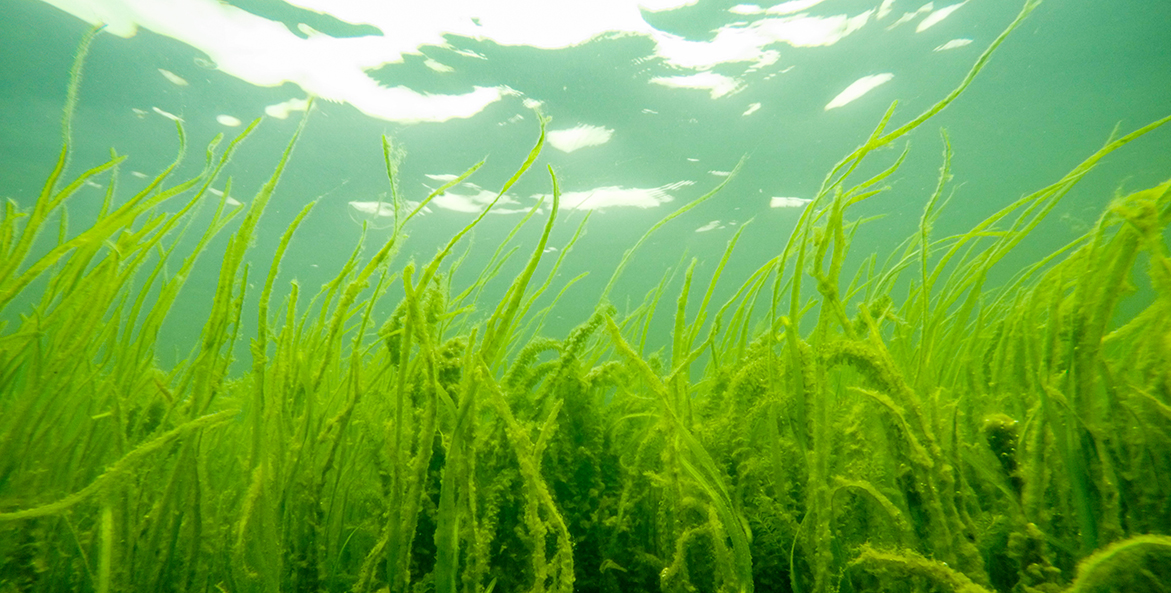Water temperatures in the Chesapeake Bay are getting hotter, and not just because it's summer. Over the past 35 years, average temperatures in the Bay have been trending upward faster than the oceans at large. Moreover, periods of extreme temperatures—what researchers call marine heat waves—are on track to become much more common in the future.
"When we hit the end of the century, marine heat waves could be happening every other day—what we call a semi-permanent marine heat wave state," says Dr. Piero Mazzini, an oceanographer at William & Mary's Virginia Institute of Marine Science (VIMS) who studies marine heat waves in coastal environments. "What is normal in the future is not going to be what is normal for people living here today."
As global climate change continues to put more pressure on Earth's ecosystems, figuring out how the Bay is already changing, and what a 'new normal' might look like, is increasingly urgent for efforts to improve water quality and protect species. Hotter temperatures, in particular, could negatively affect the Bay's dead zone and the survival of species like eelgrass and striped bass.
"These global changes do really have regional and local consequences," says Kyle Hinson, a PhD candidate at VIMS who has detailed long-term warming trends in the Bay. "Warming trends won't only impact polar bears in the Arctic, it's going to affect our crabs here, too."
Hinson's research found that the Bay is warming, on average, a little less than a quarter degree Celsius (half a degree Fahrenheit) each decade. On its face that may not seem like a lot, but it's twice as fast as the world's oceans. The trend is also much more pronounced during the summer months. That matters because summer is when the Bay suffers most from its annual dead zone, an area of extremely low oxygen that forms when algal blooms driven by excess nutrient pollution die and decompose. Warmer water holds even less oxygen and can speed up the decomposition process, expanding the dead zone.
"In the warmer months, it's directly affecting oxygen levels right when they're at their lowest," Hinson says.
The findings from Hinson's research are concerning for another reason, too. As the Bay warms overall, it also becomes more likely to experience periods of extreme heat. These marine heat waves are what captured the attention of Mazzini and his co-author Dr. Cassia Pianca. While an increasing amount of research focuses on long-term temperature trends and heat waves in the ocean, Mazzini and Pianca were struck by how little is known about heat waves in coastal waters and estuaries, like the Chesapeake Bay.
"These marine heat waves can go way beyond [the long-term warming trends]. They have short periods, but they can be significant—increasing five, six, eight degrees Celsius," says Mazzini. "A lot of organisms can be stressed by that."
Mazzini and Pianca found that the Bay is already experiencing an average of two marine heat waves each year, lasting an average of 11 days each. Temperatures during the heat waves are on average 3 degrees Celsius (5 degrees Fahrenheit) above normal, but peaks could reach between 6 and 8 degrees Celsius (11 to 14 degrees Fahrenheit) higher. But if warming trends continue, the Bay could experience such extreme temperatures for more than half the year.
"We should be very careful and have this discussion right now. How far do we want to allow climate change to go?" Mazzini says. "We need to reduce fossil fuels and seriously focus more on alternative energies if we want to have a bright future for nature and for our kids and future generations."
There is evidence that warming water temperatures have already made Bay restoration harder—another former VIMS researcher, Luke Frankel, found that cleanup efforts would have been more effective if temperatures had stayed constant since the 1980s. However, continuing to reduce nutrient pollution could help relieve pressure on species from poor water quality, and many of the same practices that improve water quality, such as protecting forests and improving conservation practices on farms, could also have benefits for mitigating climate change.
"The future is really in our hands and is what we choose to make of it," says Hinson.




